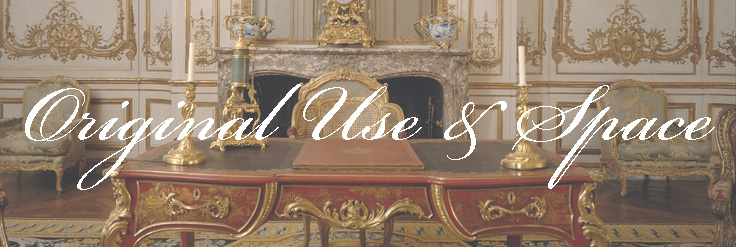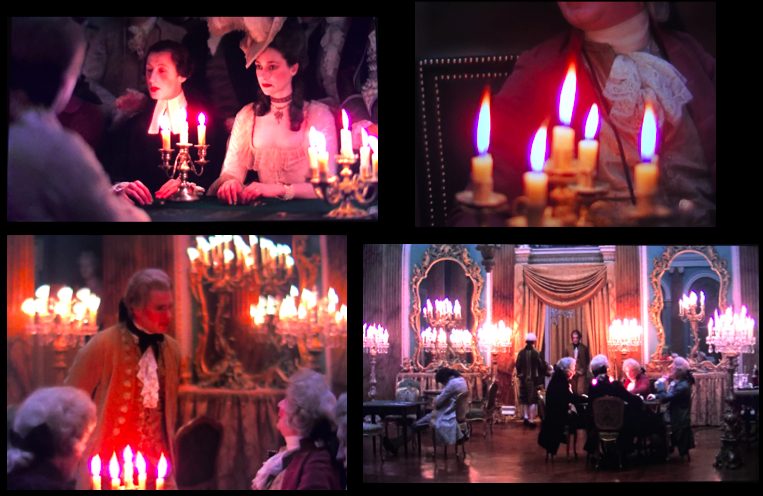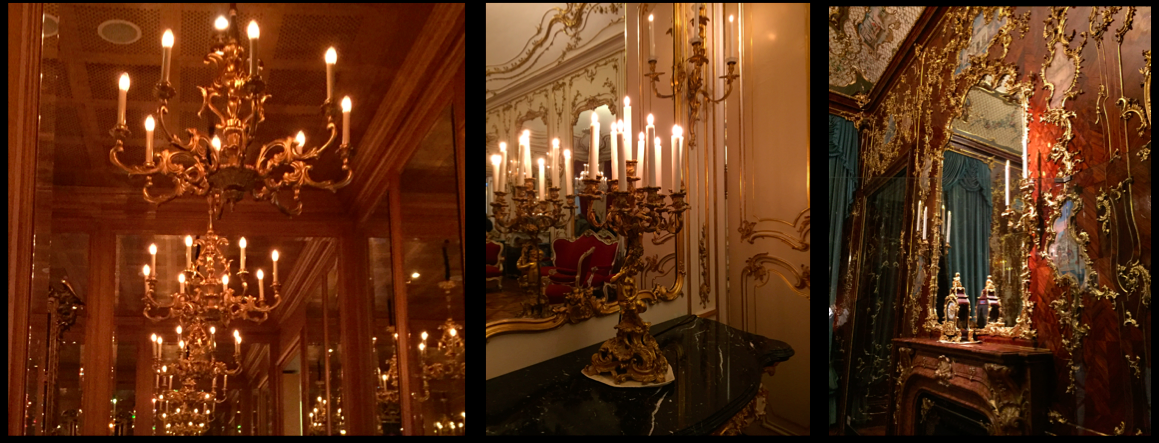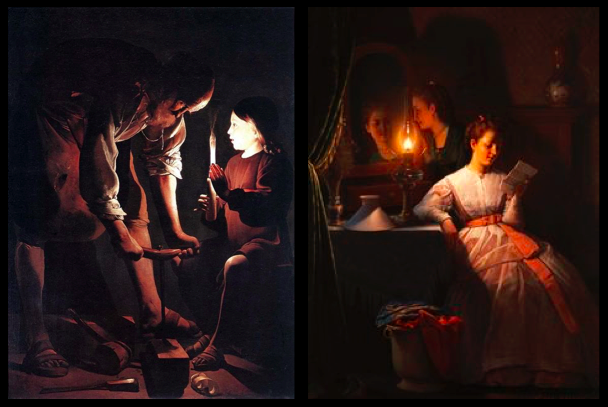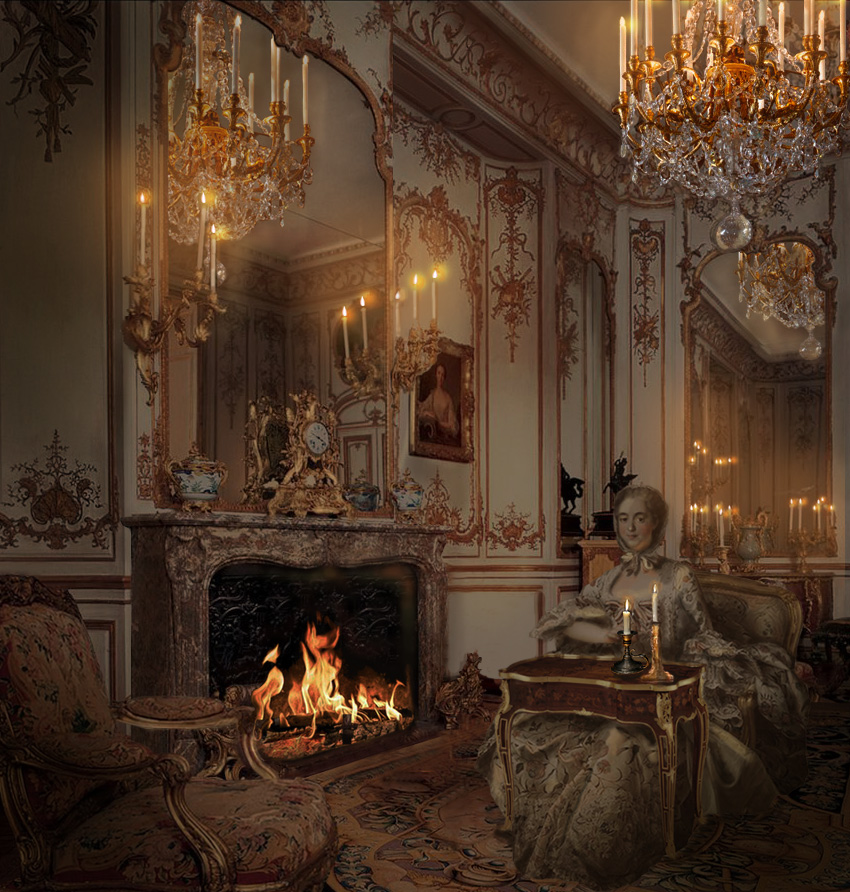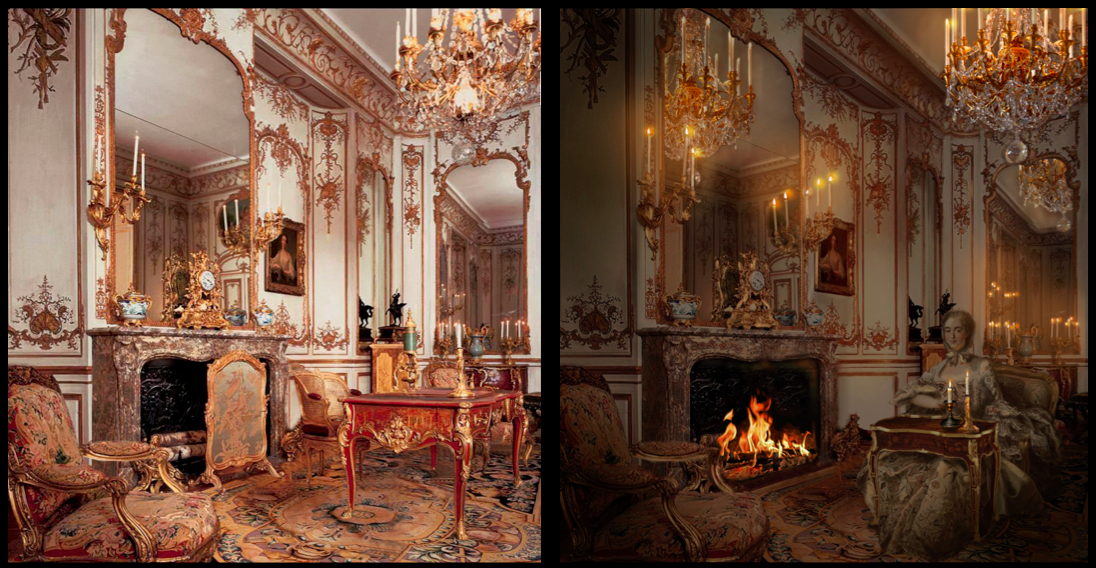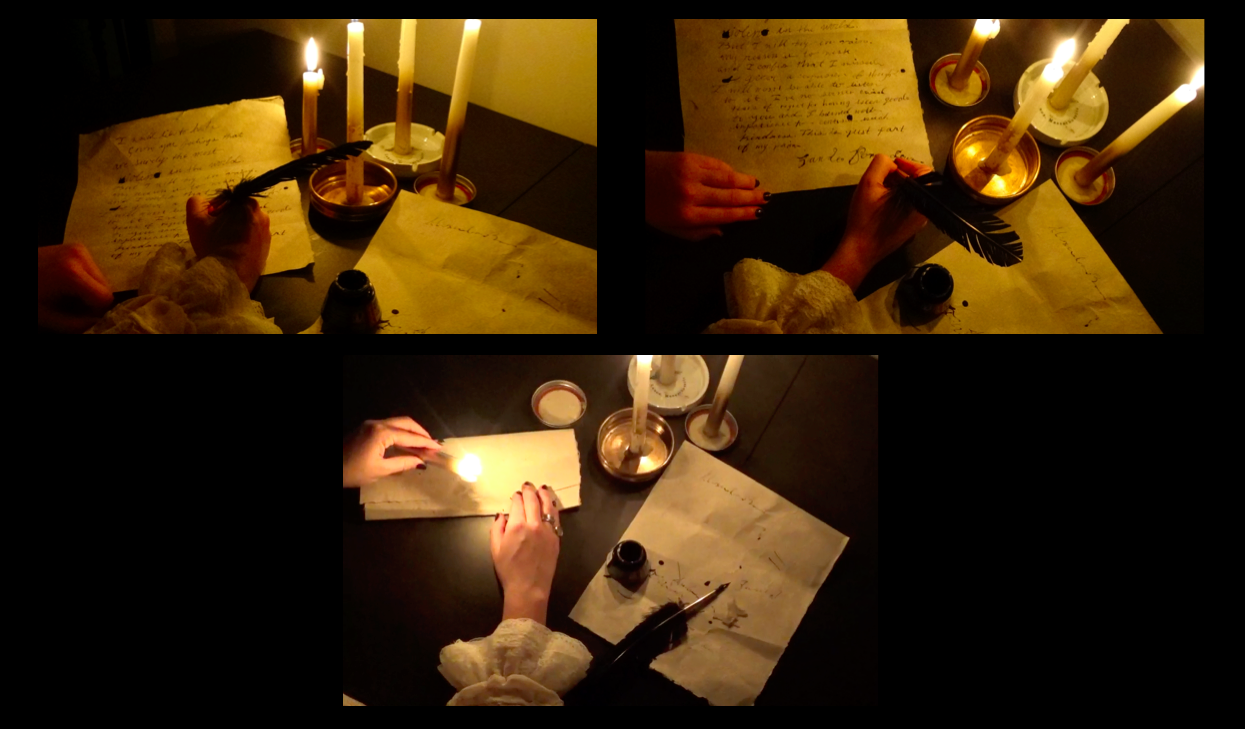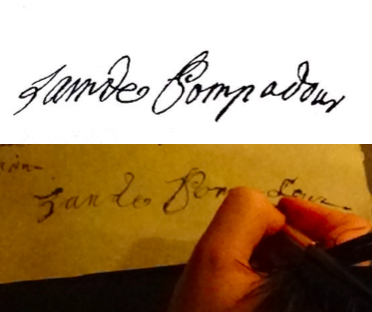Candlelight Inspiration
With the transition from larger rooms of the 17th century to the smaller, more intimate rooms of the 18th century, these spaces became “easier to light, and the small salons thus had a particular appeal after dark, when…they sparkled from the reverberation of candlelight in well-positioned mirrors” (DeJean, 40). The seduction of these rooms at night is perfectly described in La Petit Maison: An Architectural Seduction by Jean-François de Bastide:
“The day was drawing to a close and the light waned; a valet came to light the thirty candles held by a chandelier and by girandoles of Sèvre porcelain artfully arranged in their brackets of gilded bronze. These thirty candles reflected in the mirrors, and this added brilliance made the salon seem larger and restated the object of Trémicour’s impatient desires” (Bastide, 70).
My inspiration for the candlelit Varengeville Room was taken from the film Barry Lyndon by Stanley Kubrick (1975). The film was entirely shot in candlelight, something no one thought could be done.
The above images are photographs I took for inspiration for how the effects of candlelight are magnified and reflected by the placement of mirrors in rooms and how the light reflects off of the gilded boiseries. The image on the left was taken at the Sans Souci Hotel in Vienna, Austria and the center and right images were taken at Schönbrunn Palace in Vienna, Austria.
Left: Christ in the Carpenter’s Shop painting by Georges de la Tour (1645)
Right: The Love Letter painting by Peter van Schendel (1870)
These paintings served as inspiration for how I illuminated Madame de Pompadour at her desk in the candlelight.
The Varengeville Room by Candlelight
Before & After
Left: Resized Varengeville Room created by me.
Right: Using the resized Varengeville Room, I have transformed the lighting quality by including the effects of candlelight and light from the fire. I used the paintbrush in photoshop to create highlights and shadows where they would be in relationship to the candles. I also reflected the chandeliers appropriately in the mirrors as I did for the daylight image as well. The use of mirrors reflects the glow of the candlelight throughout the room, making the lighting even more theatrical. Madame de Pompadour is illuminated by the two candles on her desk. Madame de Pompadour at the Oeben table by Emma Snover.
By scaling the Varengeville Room down to its original size with its original panels, the mirrors are able to serve their intended function of creating dramatic reflections of the lit chandeliers and candelabras that give the illusion of a larger space. Additionally, the interaction between candlelight and the gilded oak paneling is integral to the overall appearance of the room.
The signature marks of the Rococo style permeate all elements of the room and create a cohesively extravagant display of grandeur, which elements such as candlelight highlight. The Rococo style began as a response to the previous Baroque style which people thought was too serious. An urge to return “life” to the space, in many different capacities, spawned the Rococo style that is trademarked by its “elaborate and elegant arabesque designs in which foliage, strapwork and other fanciful motifs” (Whitehead, 54). These designs are clearly the major influence for the gilding on the boiseries as well as the curvature of desk and chair legs seen in the Varengeville Room. What is also key about these Rococo designs is their “three-dimensional” quality seen on “wall decoration, furniture, silver, and other materials” (Whitehead, 56). The raised gilding is able to capture the light from all angles and reflect it throughout the space, bouncing off of mirrors to create a theatrical performance of the qualities of light. The lighting definitely shows the brilliance and extravagance of these details that the visitor does not have the ability to perceive. Instead, they become minor details rather than exceptional elements. The boiseries in the Varengeville Room specifically impart “a rococo virtuosity and movement…rarely matched by comparable ornament in France” and typical of the designer Pineau (Parker).
The lighting effects help connect the Rococo style of the gilded paneling with the gilded designs on the desks. The saturation and quality of candlelight is completely different from sunlight, creating an orangey warm glow that radiates off of every reflective surface. I have utilized Emma’s restoration of Madame de Pompadour at her desk in my resized Varengeville Room to show how the effect of lighting literally highlights an intimate connection between furniture and the body – the candlelight that reflects off of the gilt bronze and helps to illuminate her face, as well as the dramatic shadows the light casts in her voluminous garment.
Day to Night
This “GIF” I made is composed of the daytime and nighttime resized Varengeville Rooms and shows the transformation from one time of day to the other.
Letter Writing by Candlelight
Original Video & Photographs – Alex Bass, Emma Snover, and Constance Zhou. The top two images show a woman in the process of writing a letter at night. The bottom image shows her using sealing wax and stamp to close the letter.
Autograph of Madame de Pompadour (1721 – 1764) top image: original, bottom image: our reproduction.
Our group visualized what it would be like to write a letter in complete candlelight in a space like the Varengeville Room. The person writing is supposed to be Madame de Pompadour at her desk. It took four candles to provide enough light to actually write the letter. Emma provided the eighteenth-century love letter. Constance has provided the lace shirt to show the effect and drama of the sleeve is an integral part of the action of letter writing, drawing attention to the translucency and movement of lace.
To see the video please click here.
Composite Images, Videos & Text by Alex Bass (plus additional collaborators)
Pages
practice
